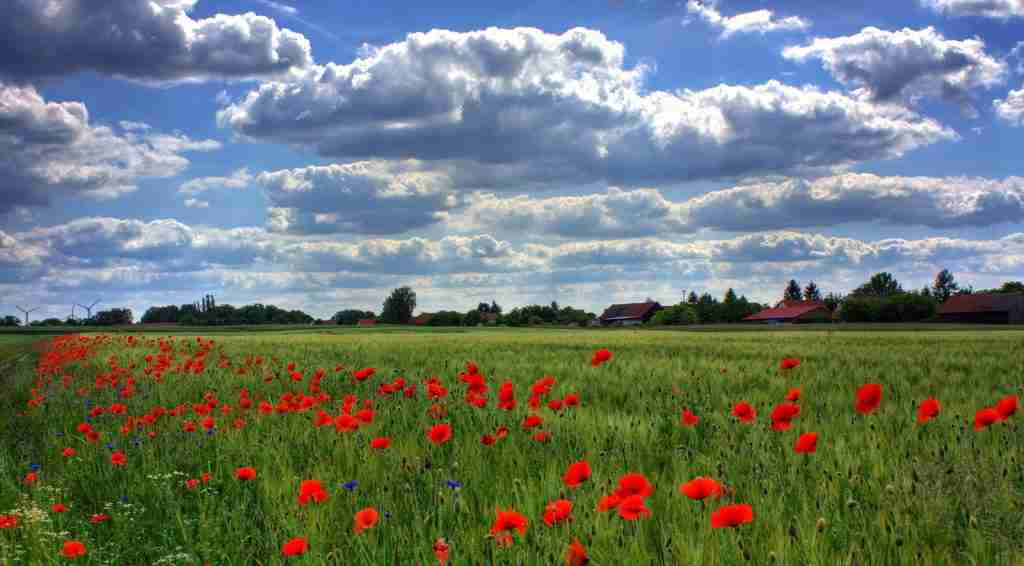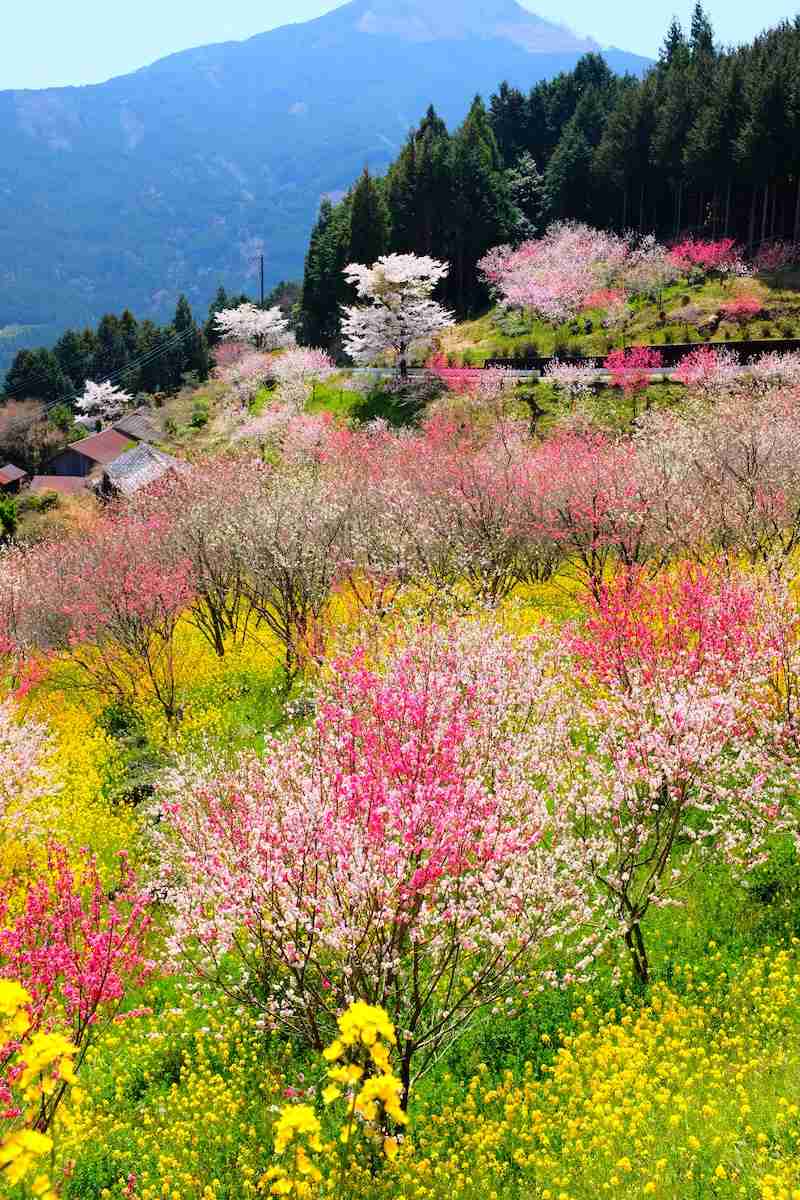26 Fun Facts About Spring You Might Not Know
1. Arrival of the vernal equinox in spring.
The vernal equinox marks the beginning of spring in the Northern Hemisphere.
This astronomical event occurs when the sun crosses the equator line, heading north, resulting in nearly equal day and night lengths.
2. Spring’s association with rebirth and renewal.
Spring is often symbolized as a time of rebirth, renewal, and new beginnings.
This is reflected in the blooming of flowers, the budding of leaves, and the emergence of wildlife, signifying life’s resurgence after winter.
3. Spring’s influence on literature and mythology.
Spring has been a source of inspiration in literature and mythology, symbolizing themes of hope and renewal.
Stories and myths often use spring to represent new beginnings and the cycle of life.
4. Cherry blossom festivals in spring.
Cherry blossoms, or sakura, are celebrated worldwide, especially in Japan, during spring.
These festivals, known as Hanami, involve enjoying the transient beauty of the blossoms, symbolizing the ephemeral nature of life.
5. Spring’s impact on animal behavior.
Spring triggers significant changes in animal behavior, such as migration and mating.
Many species emerge from hibernation, while others return from warmer climates, filling the environment with activity and sounds.
6. When does spring start?
Spring typically starts around March 20th in the Northern Hemisphere and September 22nd in the Southern Hemisphere, marking the vernal equinox.
7. Spring’s influence on poetry and art.
Spring has long inspired poets and artists, being a popular theme in literature and art.
The season’s beauty, with its vibrant colors and themes of rebirth, has been captured in countless works throughout history.
8. The importance of rain in spring

Spring showers are crucial for replenishing water supplies and nurturing growth.
This rainfall contributes to the blooming of flowers and the greening of landscapes, an essential process for ecosystems.
9. The occurrence of spring fever.
Spring fever refers to a noticeable increase in energy, vitality, and even restlessness as winter ends.
This phenomenon is thought to be influenced by changes in sunlight and temperature, affecting people’s mood and behavior.
10. Spring Equinox Celebrations and Traditions with a Touch of Fun Facts About Spring.
Many cultures celebrate the spring equinox with festivals and traditions.
These celebrations often focus on themes of fertility, renewal, and the triumph of light over darkness.
11. The impact of spring on human health.
Spring can have a positive effect on physical and mental health.
The warmer weather and increased sunlight often lead to more outdoor activities, contributing to better overall health and well-being.
12. Planting season begins in spring.

Spring is a crucial time for planting many crops and flowers.
Gardeners and farmers take advantage of the favorable weather to sow seeds, leading to the harvests seen later in the year.
13. Spring’s effect on wildlife births.
Many animals give birth in spring, taking advantage of the abundant food and milder weather.
This season is vital for the survival and growth of newborn animals, providing optimal conditions for their development.
14. Spring and the phenomenon of allergies.
Spring is known for the rise in pollen levels, which can trigger allergies.
Commonly known as hay fever, these allergies are a result of trees, grasses, and flowers releasing pollen into the air.
15. The significance of equinox eggs balancing myth.
There’s a popular myth that eggs can be balanced on their end only during the spring equinox.
While this is scientifically untrue, it is a fun tradition that highlights the fascination with equinox phenomena.
16. Increase in outdoor activities during spring.

Spring’s warmer weather encourages a surge in outdoor activities.
People are more likely to engage in hiking, picnicking, and other outdoor pursuits, benefiting from the improved weather conditions.
17. Spring’s influence on fashion trends.
Spring often brings a shift in fashion, with lighter fabrics and brighter colors.
This change reflects the warmer weather and the general mood of renewal and vibrancy associated with the season.
18. The symbolism of spring in various cultures.
Spring holds significant symbolic meaning in many cultures, often associated with fertility and growth.
Cultural festivals and rituals during spring celebrate these themes, reflecting the season’s impact on human life and society.
19. Daylight saving time begins in spring.
In many regions, daylight saving time starts in spring, moving clocks forward.
This practice aims to make better use of daylight, although it remains a topic of debate regarding its efficacy and impact on health.
20. Spring’s effect on the natural world.

Spring dramatically transforms the natural landscape, with wildflowers and greenery blossoming.
This transformation is not just visually stunning but also plays a crucial role in ecosystems, supporting a wide range of species.
21. The diversity of spring festivals around the world.
Spring is celebrated worldwide with a variety of festivals and traditions.
From Holi in India to Easter in many Christian countries, these festivals reflect the joy and spirit of renewal that spring brings.
22. Spring and the revival of nature’s sounds.
With the arrival of spring, natural soundscapes change dramatically.
The sounds of birds chirping, bees buzzing, and streams flowing become more prominent, creating a lively and rejuvenating environment.
23. The role of spring in agriculture.
Spring is a critical season for agriculture, marking the start of growing cycles for many crops.
Farmers and gardeners prepare soil and begin planting, setting the stage for the year’s agricultural production.
24. The role of increasing daylight in spring.
Days gradually become longer in spring, bringing more daylight.
This increase in sunlight not only warms the environment but also boosts people’s mood and energy levels, often leading to greater outdoor activity.
25. The variability of spring weather.
Spring weather can be highly variable, with rapid changes from warm to cold temperatures.
This unpredictability is characteristic of the transition between winter and summer, often leading to a mix of sunny days and spring showers.
26. Spring’s role in the water cycle.
Spring plays a vital role in the water cycle, with melting snow and increased rainfall replenishing water sources.
This seasonal change is crucial for maintaining water ecosystems and supporting agriculture and wildlife.
FAQs
The spring months vary depending on the hemisphere. In the Northern Hemisphere, spring months are March, April, and May, while in the Southern Hemisphere, it’s September, October, and November.
Spring tides are the highest and lowest tides that occur during the new and full moons. They result from the gravitational alignment of the Earth, Moon, and Sun.
Spring tides occur during the new and full moons, leading to higher high tides and lower low tides. Neap tides occur during the first and third quarters of the moon, with less variation between high and low tides.
The spring season is characterized by blooming flowers, warmer temperatures, and longer daylight hours. It is a time of renewal and growth in nature.
While there isn’t a direct association between metals and spring, some may consider metals like copper or aluminum, often used in outdoor decorations, as having a spring-like aesthetic.







